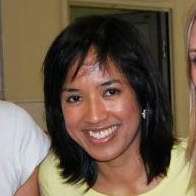Last Wednesday, the Revolutionary Armed Forces of Colombia (FARC) insurgency and the government of Colombia released a joint statement in La Habana, Cuba, announcing the conclusion of a peace accord within six months.
 It stated, among others, the creation of a special jurisdiction for peace and that the FARC insurgency would lay down their weapons and demobilise within 60 days of signing the peace accord.
It stated, among others, the creation of a special jurisdiction for peace and that the FARC insurgency would lay down their weapons and demobilise within 60 days of signing the peace accord.
Meanwhile, up in the north-west of Colombia, I sit in a group of campesino listening to the breaking news. In the Peace Community of San José de Apartadó, the local farmers are just arriving home from work in the fields and gathering around with families, neighbours and friends to watch the news together, a normal occurrence on a normal day in this mountainous region.
As I observe my surroundings, I am struck by the mixed reactions, of the comments and thoughts of the people. These people around me, these are the average Colombians living in the zone, one of the most rural parts of Colombia and also one of the most militarised and highly affected by the long conflict. How do they view the conflict, peace process and end to this long journey towards peace?
Witnessing the resistance of this small peace community, I am struck by the contrasts in observations, of how different peace might look to a negotiating table in La Habana, Cuba, from how peace might look in a conference room full of intellectuals in the capital city in Bogota, to how peace might look to a local farmer whose daily concern is safety while working his field in the mountains.
Certainly for the people here, there are many reasons to celebrate the possible end of a civil war that has lasted for a period of sixty years and has sacrificed the lives of many family members and caused them to be displaced multiple times over decades.
Nevertheless, there are still lingering concerns, scepticism as to how the peace pact could be effectively implemented, revealing a certain disillusionment of not just the peace process, but of the cooperation of the armed actors involved, a necessary ingredient if peace is truly to be found.
Their scepticism is understandable. In the zone particularly, while the government and FARC speaks of peace in La Habana, the civilians in the area continue to witness ongoing violence by legal and illegal armed actors, as well as continuous accusations against the civilian population by the local military forces.
Just recently in June, for instance, there was an escalating level of violence in San José de Apartado, which witnessed 4 occurrences of armed activities within a period of one week.
Such violence is not an isolated incidence: according to Centro de Recursos para el Análisis de Conflictos (Cerac), in June, the entire country recorded the highest level of violence since the beginning of the peace negotiations.
This violence and stigmatisation occurs despite the existence of provisional measures by the Inter-American Court of Human Rights (IACHR), international humanitarian law as well as domestic rules of law governing the conduct of state actors towards civil populations.
The implementation of the peace process is further complicated by the fact that there are multiple armed actors in the zone, while the peace pact will be enacted only between two entities: FARC insurgency and the government.
Should the FARC insurgency demobilise, there is a genuine worry that the vacuum created will incite a fight for social control amongst residual armed actors, or even cause a new group to rise out of demobilised FARC combatants.
Such a path is not unthinkable – when the United Self-Defense Forces of Colombia (AUC) demobilised in 2006, it created a space for a second generation of paramilitaries in Colombia, shifting the discourse and manner in which armed actors operate in the country.
For the locals here, there is nothing more valuable and worth fighting for than peace. Nevertheless, to them, it is certainly legitimate to pose the question of what a post-acuerdo scenario will look like and what it will mean for them, they who live right in the middle of conflict-stricken areas.
So what does peace mean, and what does peace look to a farmer, or a campesino, in Colombia? As put by one, it is the ability to work and return on their land.
"When the communities and people here were forced to displaced, there were many that left to the city. They left, not because there are more opportunities in the cities, but out of fear, of violence, of armed groups. We would know peace has arrived when those displaced to the cities are no longer scared to return to the country side and work their land, and be true to who they are, and to be campesinos."
Dear Malaysians, what does peace mean for you? – September 29, 2015.
* This is the personal opinion of the writer or publication and does not necessarily represent the views of The Malaysian Insider.


Comments
Please refrain from nicknames or comments of a racist, sexist, personal, vulgar or derogatory nature, or you may risk being blocked from commenting in our website. We encourage commenters to use their real names as their username. As comments are moderated, they may not appear immediately or even on the same day you posted them. We also reserve the right to delete off-topic comments